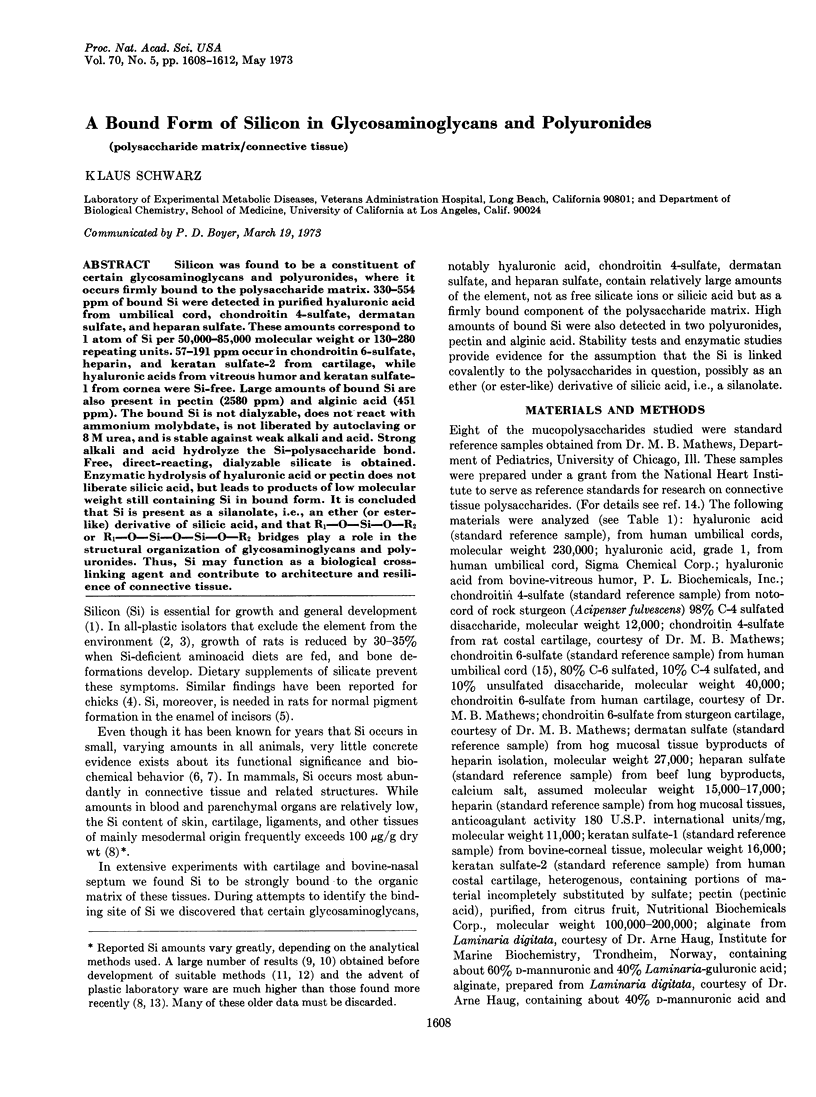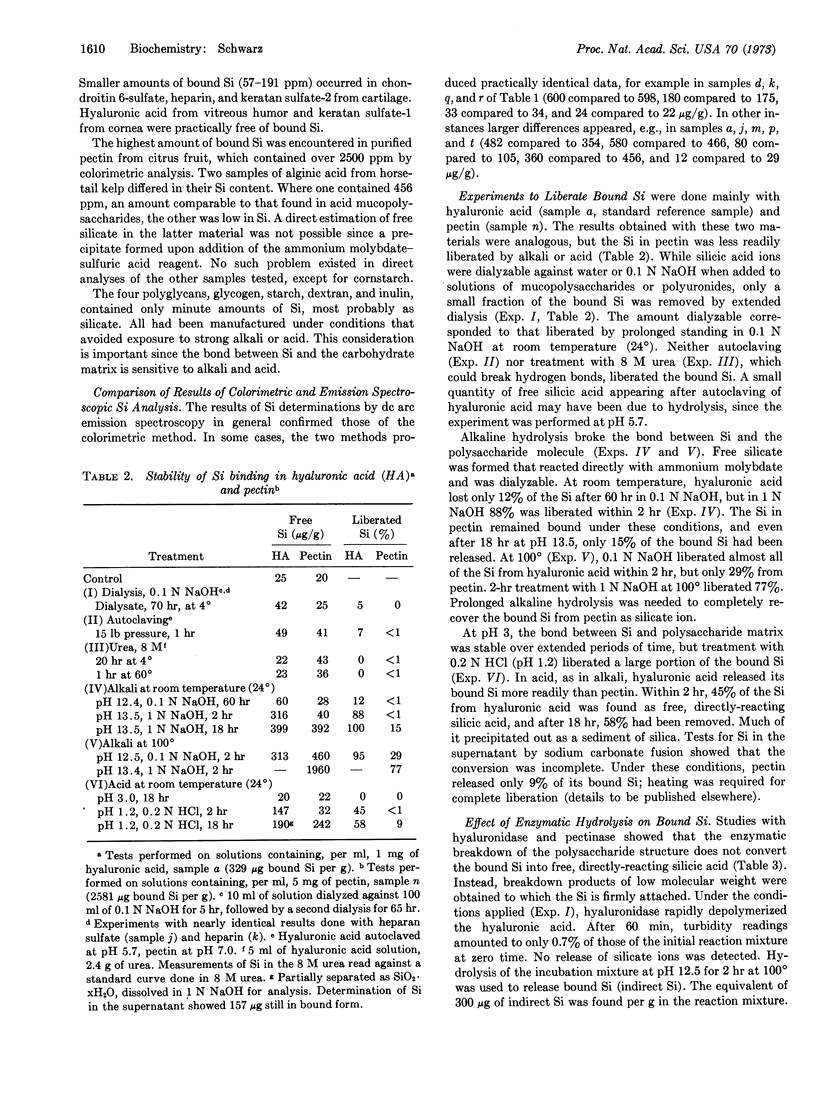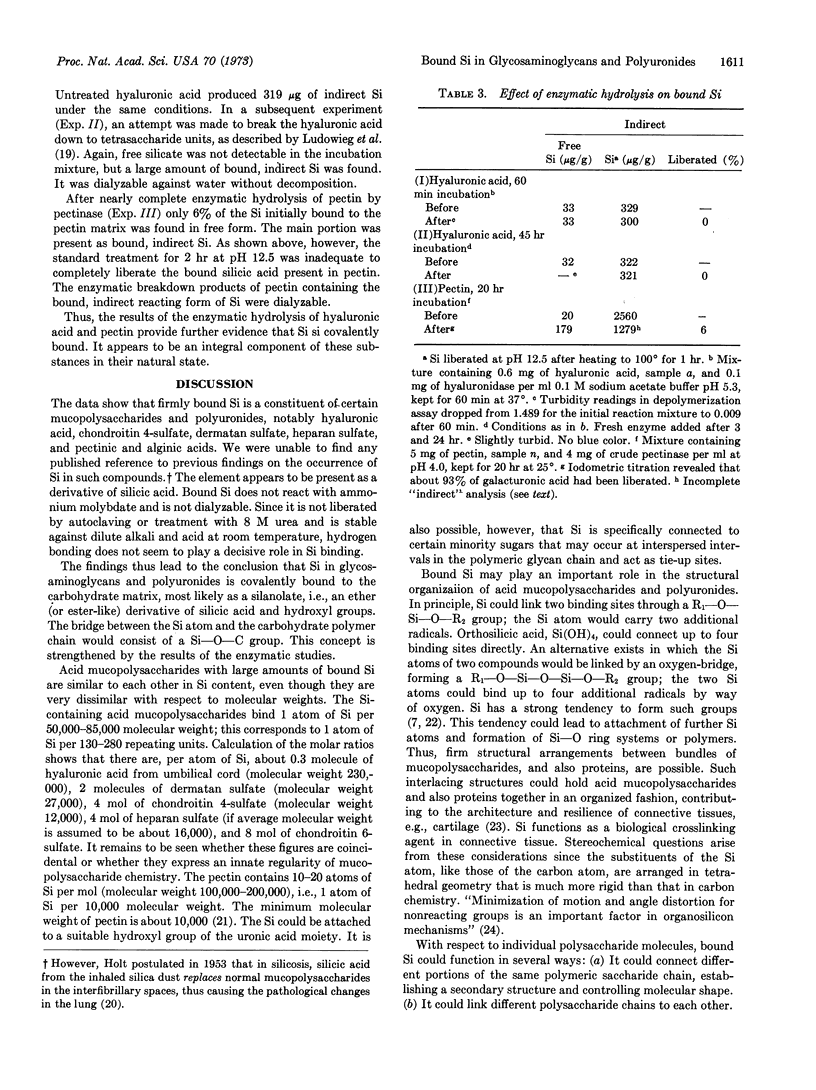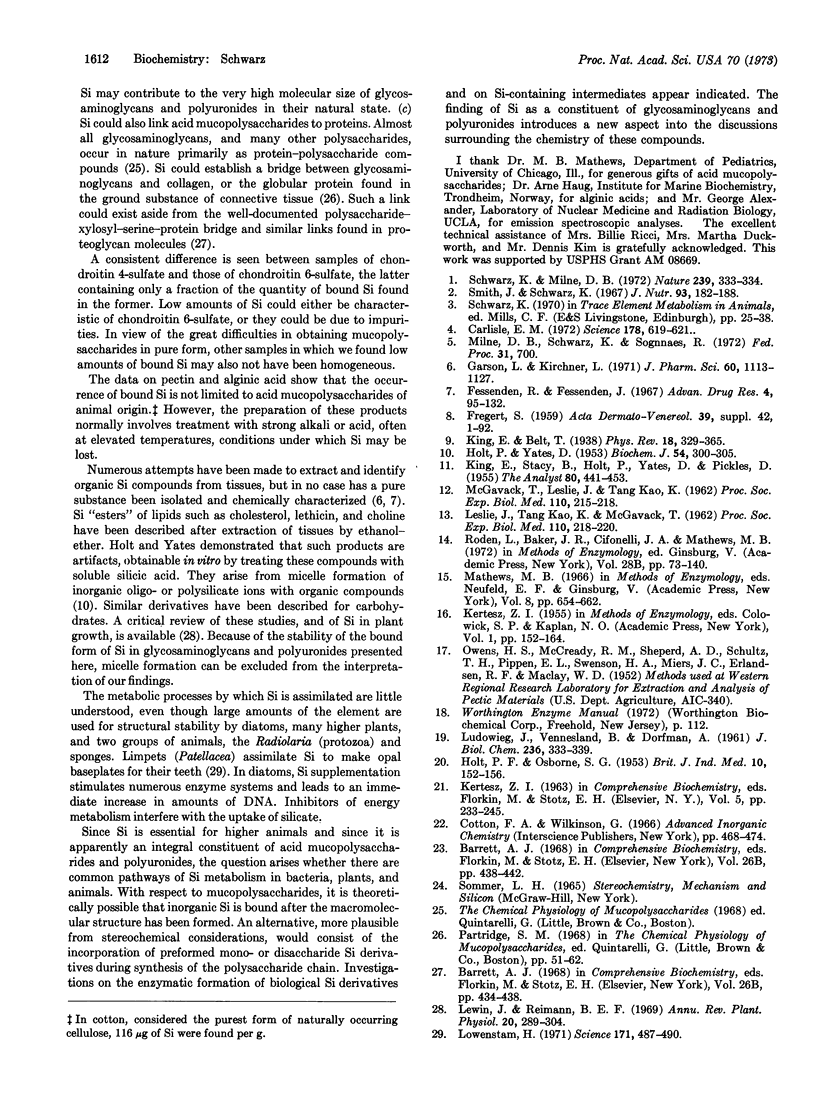Abstract
Silicon was found to be a constituent of certain glycosaminoglycans and polyuronides, where it occurs firmly bound to the polysaccharide matrix. 330-554 ppm of bound Si were detected in purified hyaluronic acid from umbilical cord, chondroitin 4-sulfate, dermatan sulfate, and heparan sulfate. These amounts correspond to 1 atom of Si per 50,000-85,000 molecular weight or 130-280 repeating units. 57-191 ppm occur in chondroitin 6-sulfate, heparin, and keratan sulfate-2 from cartilage, while hyaluronic acids from vitreous humor and keratan sulfate-1 from cornea were Si-free. Large amounts of bound Si are also present in pectin (2580 ppm) and alginic acid (451 ppm). The bound Si is not dialyzable, does not react with ammonium molybdate, is not liberated by autoclaving or 8 M urea, and is stable against weak alkali and acid. Strong alkali and acid hydrolyze the Si-polysaccharide bond. Free, direct-reacting, dialyzable silicate is obtained. Enzymatic hydrolysis of hyaluronic acid or pectin does not liberate silicic acid, but leads to products of low molecular weight still containing Si in bound form. It is concluded that Si is present as a silanolate, i.e., an ether (or esterlike) derivative of silicic acid, and that R1—O—Si—O—R2 or R1—O—Si—O—Si—O—R2 bridges play a role in the structural organization of glycosaminoglycans and polyuronides. Thus, Si may function as a biological crosslinking agent and contribute to architecture and resilience of connective tissue.
Keywords: polysaccharide matrix, connective tissue
Full text
PDF




Selected References
These references are in PubMed. This may not be the complete list of references from this article.
- Carlisle E. M. Silicon: an essential element for the chick. Science. 1972 Nov 10;178(4061):619–621. doi: 10.1126/science.178.4061.619. [DOI] [PubMed] [Google Scholar]
- FREGERT S. Studies on silicon in tissues with special reference to skin. Acta Derm Venereol Suppl (Stockh) 1959;39(Suppl 42):1–92. [PubMed] [Google Scholar]
- Fessenden R. J., Fessenden J. S. The biological properties of silicon compounds. Adv Drug Res. 1967;4:95–132. [PubMed] [Google Scholar]
- Garson L. R., Kirchner L. K. Organosilicon entities as prophylactic and therapeutic agents. J Pharm Sci. 1971 Aug;60(8):1113–1127. doi: 10.1002/jps.2600600802. [DOI] [PubMed] [Google Scholar]
- HOLT P. F., OSBORNE S. G. Studies on the nature of silicosis. I. The effect of silicic acid on connective tissue. Br J Ind Med. 1953 Jul;10(3):152–156. doi: 10.1136/oem.10.3.152. [DOI] [PMC free article] [PubMed] [Google Scholar]
- HOLT P. F., YATES D. M. Tissue silicon; a study of the ethanol-soluble fraction, using 31Si. Biochem J. 1953 May;54(2):300–305. doi: 10.1042/bj0540300. [DOI] [PMC free article] [PubMed] [Google Scholar]
- LESLIE J. G., KAO K. Y., McGAVACK T. H. Silicon in biological material. II. Variations in silicon contents in tissues of rat at different ages. Proc Soc Exp Biol Med. 1962 Jun;110:218–220. doi: 10.3181/00379727-110-27470. [DOI] [PubMed] [Google Scholar]
- LUDOWIEG J., VENNESLAND B., DORFMAN A. The mechanism of action of hyaluronidase. J Biol Chem. 1961 Feb;236:333–339. [PubMed] [Google Scholar]
- Lowenstam H. A. Opal precipitation by marine gastropods (Mollusca). Science. 1971 Feb 5;171(3970):487–490. doi: 10.1126/science.171.3970.487. [DOI] [PubMed] [Google Scholar]
- Schwarz K., Milne D. B. Growth-promoting effects of silicon in rats. Nature. 1972 Oct 6;239(5371):333–334. doi: 10.1038/239333a0. [DOI] [PubMed] [Google Scholar]
- Smith J. C., Schwarz K. A controlled environment system for new trace element deficiencies. J Nutr. 1967 Oct;93(2):182–188. doi: 10.1093/jn/93.2.182. [DOI] [PubMed] [Google Scholar]


